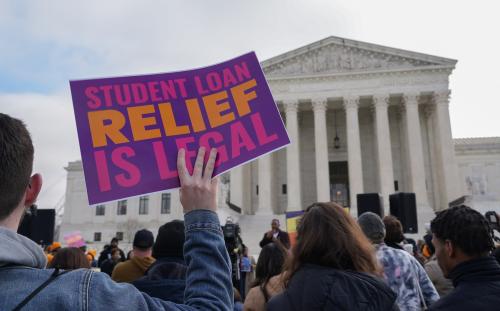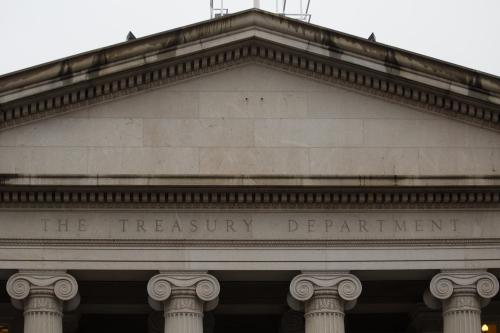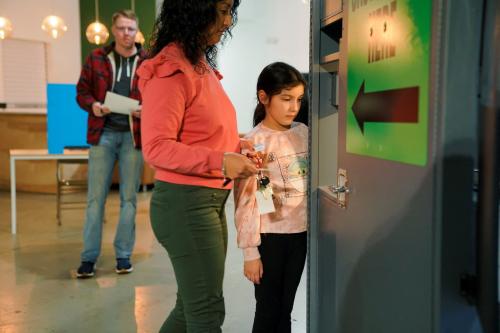In Tuesday’s Chicago mayoral primary, the incumbent, Lori Lightfoot received only 17% of the vote, failed to finish in the top two, and is ineligible to participate in the April runoff that will choose Chicago’s next mayor. Why did this happen, and what does it mean for the future of Chicago politics and, for that matter Democratic Party politics?
In much of today’s politics, large organizations are less important than they once were, and candidates for office are individual entrepreneurs who must piece together their own majorities. Chicago is different. Although the fabled Daley “machine” has disappeared, enduring organizations still dominate many of the city’s 50 wards, and large unions can still determine the outcome of city-wide contests.
Two unions stand above the rest in the Windy City — the police and the teachers. Lightfoot managed to lose the confidence of both, creating a huge opportunity for her competitors. Paul Vallas, who finished first with 34% of the vote, was backed by the police, while Brandon Johnson, who came in second with 20%, got the endorsement of the teachers.
The election also had an ideological dimension. Because Chicago has only one major political party, fights that in many places would be waged between the parties take place among Democrats. Johnson ran as an unabashed progressive, Vallas as a law-and-order moderate. Lightfoot, who was expected to govern as a progressive, managed to antagonize many of her potential allies, and the center ground she was left to defend wasn’t large enough, or as enthusiastic as she needed. She won 16 of the 50 wards, almost all with below average turnout. She finished first in only one of the 10 wards with the highest turnout, compared to first place finishes in 6 wards for Vallas and 3 for Johnson. The 2020 redistricting, which featured a struggle between Black and Latino leaders, resulted in 16 wards with Black pluralities or majorities, 14 Latino-dominated wards, 19 white wards, and — for the first time, one Asian ward, which gave 58% of its vote to Vallas, the only white mayoral candidate running this year.
Lightfoot, who is Black, carried most of the Black wards on Chicago’s south side, but with unimpressive margins. Johnson, the other leading Black candidate, did best in the Northeast portion of the city, which blends multiple ethnic groups — Jews, Pakistanis, and East Asians, among others — with white progressives. (He also did well in Hyde Park, where the University of Chicago is located.) Vallas racked up huge wins in Northwest portion of the city, home to large populations of Poles, Ukrainians, and other working- and middle-class whites.
Despite being the only Latino candidate, Jesus “Chuy” Garcia finished a disappointing fourth with less than 14% of the vote. He carried only 6 wards, all led by Latino aldermen and women. In all but one of these wards, Vallas finished second, ahead of all the Black candidates, and Lightfoot’s support was mired in single digits.
This brings us to the April runoff, when Chicago voters will choose between a moderate Democrat and a progressive. Johnson and his allies have already made it clear that they will try to exploit this ideological divide by depicting Vallas as a closet Republican who is too conservative to lead a Democratic city.
Results of similar contests in other big cities don’t paint a consistent picture. In Los Angeles, a progressive Black woman, Karen Bass, defeated a moderate white candidate, real estate developer Rick Caruso, the former head of the city’s Board of Police Commissioners. In New York City, by contrast, Eric Adams, a Black moderate who served as a police officer for more than two decades, defeated several more progressive candidates. It’s hard to know which of these two models Chicago more closely resembles. Here are some leading indicators:
Public safety in Chicago was a huge issue in the first round of the election and is likely to remain so in the runoff. Over time, Johnson has wavered on this issue. Less than a month after George Floyd’s murder, he sponsored a non-binding resolution calling on Cook County (in which Chicago is located) to “redirect funds from policing and incarceration to public services not administered by law enforcement.” Later, he denied supporting efforts to “defund the police.” It is unclear whether his new stance will be enough to persuade communities battered by violent crime, many of them Black and Latino, to support him.
Nor is it clear how the political tensions between Blacks and Latinos that surface during the redistricting controversy will affect the election. If Johnson’s poor showing in the Latino districts Garcia carried reflects lingering bad feelings between the groups, Latinos could tilt to Vallas or stay home on election day, which would probably doom Johnson’s candidacy. But if the Latino progressives who represent the core of Garcia’s following join forces with the progressive Black candidate, the contest could be competitive, even though Vallas begins with a 14-point edge over Johnson.
Nor, finally, is it clear whether Johnson can mobilize the downscale Black vote that failed to turn out in sufficient numbers for Lightfoot. It is possible that the adverse trends of recent years — crime, inflation, and the pandemic — have led this portion of the electorate to doubt that politics is the most effective way of improving their circumstances.
One thing is clear: Democrats’ prospects in 2024 will be shaped by the salience of the crime issue, turnout among Black voters, and the shifting preferences of Latinos, who are becoming an important swing group. The outcome of the April runoff in Chicago will shed some early light on these trends, and Democrats should be paying attention.
The Brookings Institution is committed to quality, independence, and impact.
We are supported by a diverse array of funders. In line with our values and policies, each Brookings publication represents the sole views of its author(s).








Commentary
Understanding what happened in the Chicago mayoral race
March 2, 2023